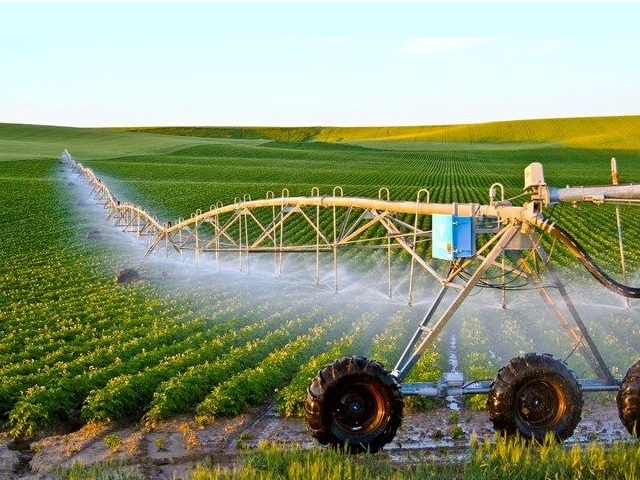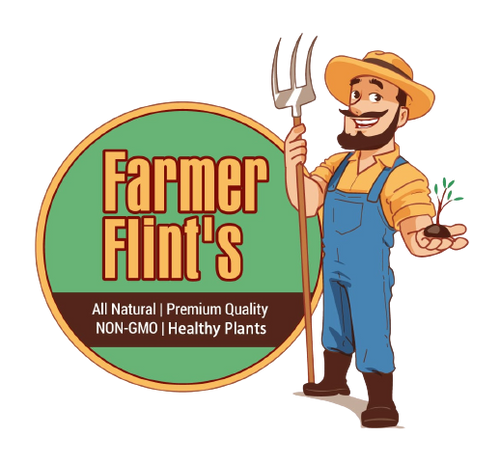Introduction
Hello everyone, my name is John and I work as an agricultural consultant. I wanted to share some of my thoughts on how technology is helping to transform crop production and make it more efficient and sustainable. Agriculture has always been evolving to adapt to the needs of the time, and right now technology is playing a major role in helping farmers keep up with growing demand while protecting our environment.
In this post, I will look at some of the key ways that technology is helping to improve yields, reduce costs, and have a lighter impact on the land and climate. I'll discuss innovations like precision agriculture, automated equipment, drones, sensors, data analytics and more. My goal is to provide an overview of the many opportunities that new technologies are creating for farmers as well as to highlight some of the challenges still remaining. I hope this post gives you a good sense of both the exciting progress as well as the continued work ahead as we strive to use technology to help modernize crop production.
Precision Agriculture and Automation
One of the major areas where technology is having a big impact is through precision agriculture techniques that allow farmers to monitor and manage their fields with a much higher degree of precision than ever before. Precision agriculture involves using GPS, GIS, sensors, drones and other tools to gather field data and then analyzing that data to help farmers make optimized management decisions.
Some key precision agriculture applications and technologies include:
Variable Rate Technology (VRT) - VRT systems allow farmers to apply exactly the right amount of inputs like fertilizers, pesticides, seeds or irrigation directly to the plant or soil as needed on a variable basis, rather than blanket treating the whole field uniformly. This saves money on inputs and reduces waste and pollution. VRT is commonly used with fertilizer spreading, lime and manure application.
Automated Guidance Systems - Automated steering is another precision technology that is revolutionizing field operations. GPS-based autoguidance systems precisely steer tractors, harvesters and other equipment without human input. This ensures perfectly straight lines are followed for things like planting, fertilizing, spraying and harvesting which leads to more efficient use of inputs and higher yields. Autoguidance helps reduce operator fatigue and improves safety too.
Soil Mapping - Advanced soil mapping using sensors, probes and drones creates detailed digital maps showing variation in soil properties such as organic matter, nutrients, texture, moisture and pH levels across fields. This helps farmers tailor their management specifically to each unique soil zone.
Yield Monitoring - Yield monitors installed on combines provide spatially referenced yield data down to the square meter level. This shows farmers exactly where their best and worst yielding areas are located which aids future management like applying extra fertilizer or drainage in low yielding patches.
Imagery and Sensors - Aerial and satellite imagery, as well as ground-based crop sensors, scouts and probes, monitor crop growth, scouting for issues like weeds, diseases or nutrient deficiencies. Thermal cameras can detect moisture stress or insects. This precision scouting helps farmers proactively address problems.
Decision Support Tools - Computer software takes all this field data and turns it into actionable insights and recommendations through predictive modeling and algorithms. Tools analyze the data to help with irrigation scheduling, fertilization prescriptions, hybrid selections and more.
The benefits of adopting precision agriculture practices are substantial. For example, studies have found VRT alone can increase yields by 5-15%, reduce fertilizer use by 10-30%, and save farmers $5-$50 per acre in input costs depending on the crop. When you scale those numbers across thousands of acres, it adds up to major savings. And less fertilizer means less environmental impact from runoff.
Automation is also advancing rapidly on farms. Autosteer has now been widely adopted for many field operations. Robotics are also emerging with self-driving tractors in development as well as automation of tasks like weeding, fruit harvesting and herd management. Early adopters report automation saving 10-30 hours of labor per acre. This translates to greater efficiency, safety and cost savings. It can even alleviate rural labor shortages in some areas.
Drones and Sensors
An exciting new technology quickly gaining ground is agricultural drones. Small unmanned aerial vehicles equipped with cameras, infrared sensors and other tools are revolutionizing various farm tasks. Some common drone applications include:
- High resolution aerial imaging - Drones with multispectral cameras capture extremely detailed imagery and crop scouting data. This aids with mapping, monitoring water/nutrient needs, yield prediction and pest/disease detection.
- No-fly zone monitoring - Drones help identify environmentally sensitive regions like wetlands that should be avoided during spraying or harvesting to prevent damage.
- Variable-rate application - Drones equipped with fertilizer or pesticide sprayers can precisely treat problematic zones at the centimeter-level needed based on data insights gained from aerial imaging.
- Herd management - Drones help shepherd and monitor livestock, count animals, check for health issues, and more efficiently move them between pastures.
- Irrigation monitoring - Infrared and thermal sensors on drones identify moisture stress in crops, alerting farmers to improve irrigation in dry areas before yields are impacted.
- Greenhouse/indoor production - Drone technology has big applications for controlled environment agriculture like greenhouse crop surveys and pollination.
Research continues to develop even more advanced drone capabilities like detecting ripe/unripe fruit individually in orchards. Overall it is estimated agricultural drones will generate over $32 billion annually by 2026 as they become more accessible and integrated with other farm tech.
Another emerging area is wireless sensor networks that can monitor soil moisture, light, temperature and more across fields continuously without wires. Sensor tags attached to individual plants also measure growth stages, diseases and biotic/abiotic stresses. The internet of things (IoT) has enormous potential for developing smart, real-time sensor technology across agriculture.
Big Data and Analytics
Perhaps the biggest game changer though is how all this precision data is coming together through big data analytics and machine learning. The volume of agronomic data generated on large farms each year through sensors, drones and other monitoring now amounts to petabytes - more than most companies or even governments have to work with.
Managing and extracting actionable insights from such massive datasets requires high powered computing and data science techniques that weren't possible just a few years ago. Major technology firms and agribusinesses are increasingly dedicated to agricultural informatics and data-driven R&D initiatives. Academia too is ramping up degree programs focusing on agricultural data science.
Some notable ways big data analytics are helping modernize farming include:
- Soil Mapping - Machine learning applied to years of soil data improves the resolution and accuracy of digital soil maps, allowing for hyperlocal management.
- Yield Prediction - Predictive modeling use historical yield maps, weather, soil tests and other data to forecast yields months in advance with over 90% accuracy. This helps mitigate risks from drought, pests.
- Precision Recommendations - Data analytics develop real-time, field-specific guidance for things like optimal hybrid/variety selection, planting population, fertilizer rates and more.
- Automated Decision Making - AI and IoT enable creating "smart farms" where soils, crops and conditions are continuously monitored and equipment/processes automated through algorithms without human oversight.
- Pest and Disease Forecasting - Analytics reveal patterns to provide early warning of insect, weed or pathogen outbreaks so preventive measures can be taken.
- Supply Chain Optimization - Big data is optimizing all aspects of supply chain logistics from transportation and warehousing to demand forecasting through data sharing between producers and distributors.
- Carbon Farming Innovations - Technologies that help quantify carbon sequestration potential or reductions in GHG emissions by farming practices are spurring carbon markets and payments for ecosystem services.
The market value of AI in agriculture alone could surpass $16 billion by 2025 according to some analysts. Farming today involves unprecedented data volumes that really do necessitate new high-powered digital tools to glean maximum value, something traditional methods simply can't achieve at scale. Data-driven farming points the way towards highly "smart" and optimized future models.

Green Energy and Conservation Agriculture
Yet another exciting area of modernization is how agricultural technology is progressing to use green energy more and improve land stewardship practices. A few relevant advancements include:
- Renewable Energy Usage - Solar panels are increasingly powering irrigation pumps, sensors, freezers/coolers and more on farms. Combined with batteries, this supplies reliable off-grid energy and reduces reliance on diesel.
- No-Till and Minimal Tillage - Automated no-till planters place seeds precisely into undisturbed soil with minimal compaction, improving moisture retention significantly while reducing fuel costs.
- Integrated Pest Management - Sensor technology, drones and analytics enable precision applications of pesticides only when truly needed, slashing chemical usage through Integrated Pest Management.
- Cover Cropping - Smart seeding equipment make it easier for farmers to establish cover crops during fallow seasons between cash crops to build soil organic matter without extra labor.
- Regenerative Practices - Advanced grazing systems for livestock based on holistic planned grazing and mob grazing are revitalizing pasturelands through carbon sequestration.
- Water Conservation - Computerized drip irrigation, soil moisture probes, and variable-rate irrigation systems deliver water directly to roots in precise amounts according to need, wasting much less.
FAQs
FAQ 1: How does precision agriculture help farmers save money?
Precision agriculture techniques like variable-rate technology, yield monitoring and automated guidance systems allow farmers to be much more efficient with their inputs like seeds, fertilizers, pesticides and fuel. Instead of blanket applying these across an entire field, precision methods apply only what is needed varying application rates based on yield data, soil tests and crop health indicators.
FAQ 2: What challenges still remain with technology adoption in agriculture?
While technology is rapidly advancing and many new tools have been widely adopted, there are still barriers holding some farmers back from utilizing the full potential of agricultural innovations. Upfront costs of precision equipment, automation and big data solutions can be relatively high for individual producers. Access to broadband internet and cellular coverage in rural areas also limits connectivity needed to utilize many digital tools.
FAQ 3: How can drone technology further improve crop production?
Drones have already proven invaluable for tasks like crop scouting, field mapping and variable-rate applications. However, their role is still expanding rapidly as new sensors and data analytics continue advancing. Some promising areas drones could revolutionize farming even more include automated fruit/veggie counts and yield forecasts, individual plant treatment through 'smart spraying,' automatic detection and prescription of weeds or pests, pollination services for certain crops, expanding into controlled environment agriculture applications, and potentially autonomous field work down the line.
FAQ 4: Will big data and AI eventually replace human farmers?
It's unlikely data analytics and automation through AI will entirely replace human farmers any time soon. While certain routine physical tasks are becoming automated, there are still many aspects of farming where human judgement, common sense problem solving and management oversight will be needed well into the future. Growing, harvesting and caring for living plants is a complex biological process that technology has not mastered and may never fully replace humans in overseeing.
FAQ 5: How can technology help smallholder farmers?
While large commercial growers have benefited most from advanced technologies so far, innovations are rapidly emerging that can especially aid resource-limited smallholder farmers who make up a large portion of global food producers. More affordable smartphones provide access to vital crop advisories, market prices and financial services previously unavailable to remote growers. Low-cost drones and basic soil moisture sensors give precision insights. Solar pumps and batteries replace diesel.
FAQ 6: What are some criticisms against the increased use of technology in agriculture?
While technology clearly provides many advantages, some argue it also risks unintended downsides if not implemented responsibly. Relying too heavily on data outputs without full understanding could lead to poor management decisions in certain cases. Monocultures enabled by new tools may threaten biodiversity if not balanced with other practices. Proprietary sensors and software may concentrate industry control in only a few large companies, limiting competition and farmer autonomy over time if regulation and open protocols are lacking. Overuse of automation may exacerbate rural job losses rather than creating new technology-related careers as some predict.
Conclusion
In conclusion, there is no question that new agricultural technologies are revolutionizing crop production systems worldwide and playing an important role in addressing issues like rising food demand, input costs, and climate change challenges faced by farmers. Precision agriculture, automation, drones, big data analytics and renewable energy innovations all hold tremendous promise for the future to dramatically boost yields, farm incomes, and conserve natural resources if implemented knowledgeably. While adoption barriers and sustainability risks require continued attention, the various ways cutting edge digital tools empower farmers with better information and efficiency is truly transforming agriculture into one of the highest tech industries.


